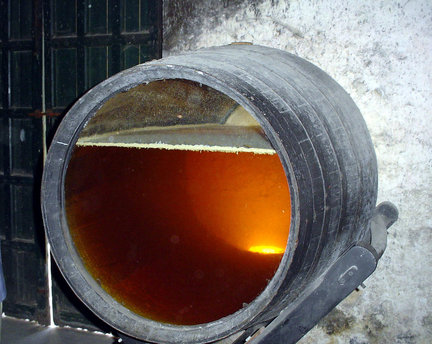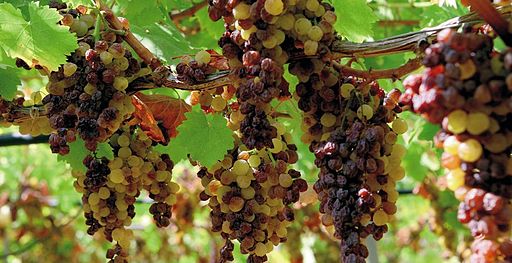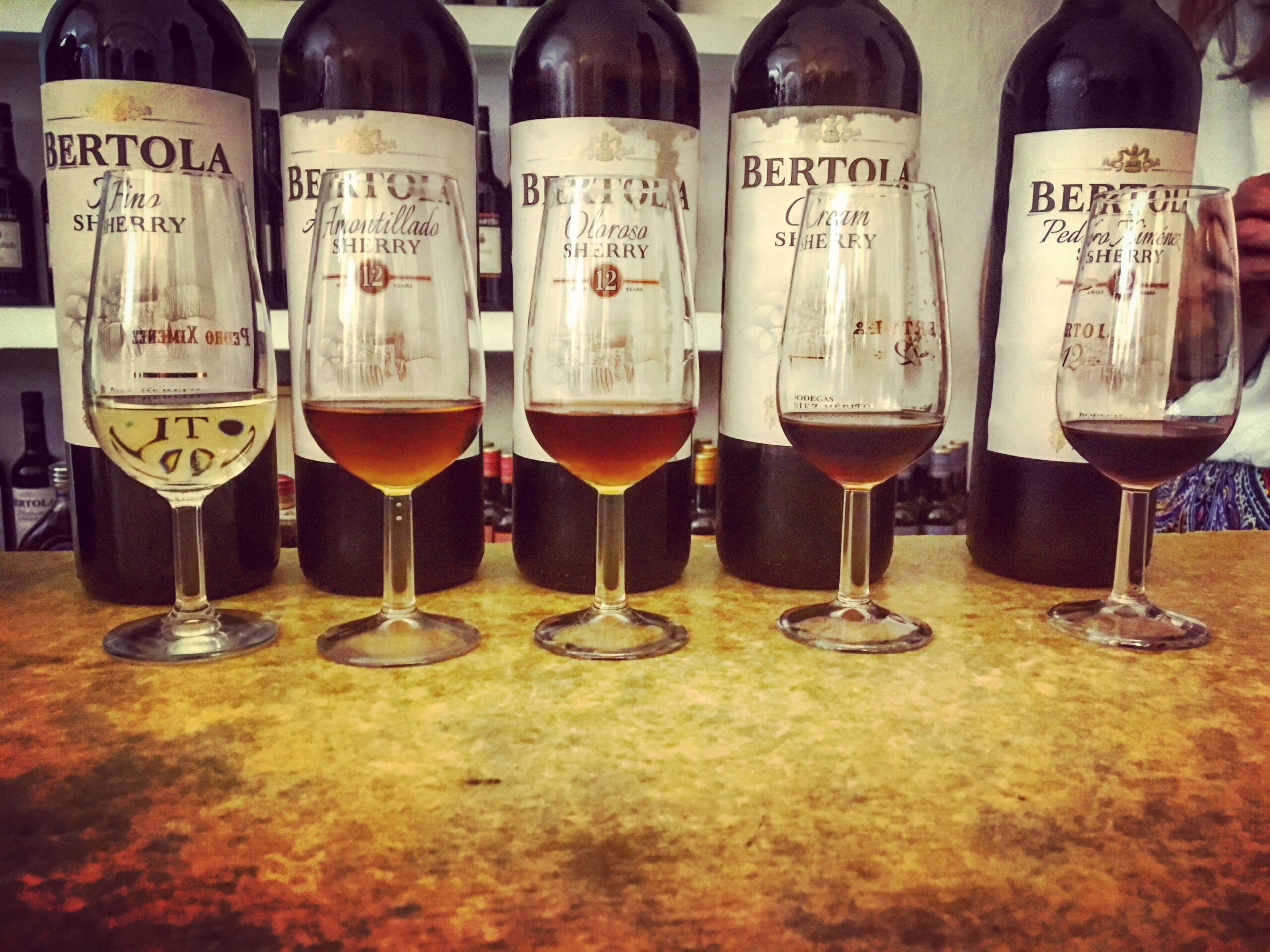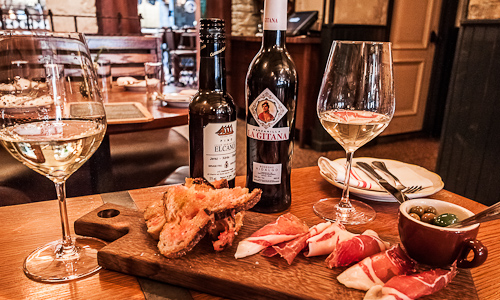
Sherry is a fortified wine. It is a white wine to which extra alcohol (distilled grape juice) has been added.
It can only be produced in a small region in Andalucia, in South West Spain. The sherry triangle is formed by three key cities: Jerez de la Frontera, Sanlúcar de Barrameda and El Puerto de Santa María.
Three grapes can be used for the production of sherry: Palomino, Moscatel and Pedro Ximénez. Palomino is a high yielding variety which produces wines of low acidity and modest fruitiness. It is good at expressing the coastal minerality of the soil. Moscatel and Pedro Ximénez are used to produce sweet sherries with the same name.
Although most people automatically think of sweet sherries, the majority of sherry wines are actually dry. Dry sherry exists in two types:
- Fino / Manzanilla which mature under a layer of flor yeast (closed off from oxygen)
- Oloroso which is aged without flor, interacting with the oxygen inside the barrels
Flor is a layer of yeast cells that forms inside the barrels on top of the wine. In humid bodegas, the development of flor occurs naturally. Adding more alcohol to the base wine blocks/stops the development of the flor. This makes the wine age oxidatively and gradually change color to brown.
Two mixed types of dry sherry are: Amontillado and Palo Cortado. These sherries that start their life as Fino (non-oxidized aging) but lose their layer of flor along the way and have a second, oxidative aging phase (usually longer).


Sweet sherry
Sweet sherry is produced by picking Pedro Ximénez (PX) or Moscatel grapes late or drying them in the sun for maximum concentration of sugars, or by stopping the fermentation early. This results in a naturally sweet wine.
Medium Sweet (Cream sherries) are blends of dry wines with sweet wines or grape syrup, with varying levels of sweetness.
Sherry Aged in a Solera
Sherry wines are generally matured using an ensemble of barrels arranged in groups called Soleras. Each barrel in the Solera has a slightly higher age. Think of it as a waterfall system: the final wine is bottled from the oldest barrels at the bottom, which are then topped up with slightly younger wine from the previous stage. The youngest barrel receives the new wine from the latest harvest. The barrels in the Solera are never emptied as they will never transfer more than 1/3rd of the contents at one time.
A solera results in a wine that is a blend of different vintages, so any age mentioned on the label is an average age of all wines involved.


Storing Sherries
Sherry should be stored upright, in a cool and dark place. Fino and Manzanilla should be treated like other white wines: don’t wait too long to open them, and once opened they’ll only stay fresh for a few days in the fridge.
Other types of sherry which undergo some oxidation are more stable and can be kept longer, even in an open bottle. Remember to serve sherry in a proper wine glass that you would use for white wine, with a sufficiently wide opening.
Pairing Sherries with Food
Due to its wide array of different styles and aromas, sherry is a wonderfully flexible wine at the table.
- Fino / Manzanilla is a great aperitif: pair it with seafood, vegetables or sushi.
- Amontillado / Manzanilla goes well with white meat or spicy Asian food.
- Oloroso is for red meat with sauce. They all go well with dried ham, olives, cheeses and nuts.
- PX / Moscatel are dessert wines – think chocolate or blue cheese.


